Deadwood is still considered one of the best Western television series of all time, attributed in no small part to the historical accuracy depicting the events that shaped the real frontier town of Deadwood. The show follows Sheriff Seth Bullock (Timothy Olyphant) and saloon-owner Al Swearengen (Ian McShane), two real figures in Deadwood's origin story. It was also populated by some of the Wild West's most enduring icons, like Wild Bill Hickok and Calamity Jane. Deadwood blended truth with fiction to tell an exciting narrative about the hardships and opportunities of the mining town.
Even though Deadwood was canceled after 3 seasons, there's no denying it's a well-documented and researched series that offers a glimpse into the harsh realities of life in the American West. The creators, writers, and actors took the time to be as historically accurate wherever possible while also applying creative license to embellish characters who were inspired by the sort of people who would seek their fortunes in Deadwood. Watching it feels as close to actually being a fly on the wall of Al's saloon as fans can possibly get in the Western genre.
15 The Crédit Mobilier Scandal Really Affected New Investments
A Financial Scandal Had Reaching Consequences
Deadwood takes a lot of liberties with its history, but one of the ways it is able to comment on history while telling its own story is through subtle hints. At various times in the series, there is mention by several characters of difficulties getting investors on board with their new ventures due to a financial scandal that took place out east. While there are no specifics given to what happened, the characters are referring to the Crédit Mobilier scandal.
The scandal came from several executives of Union Pacific who defrauded investors during the building of a new railroad line in the 1860s. However, while the project was only going to cost $50 million, the executives raised nearly double that amount and pocketed the excess wealth. Though a smaller impact on the overall story, it is interesting how this small bit of history was made to influence certain events of the show.
14 A Shooting In The Gem Saloon
Trixie's Character May Have Come From A Real Incident
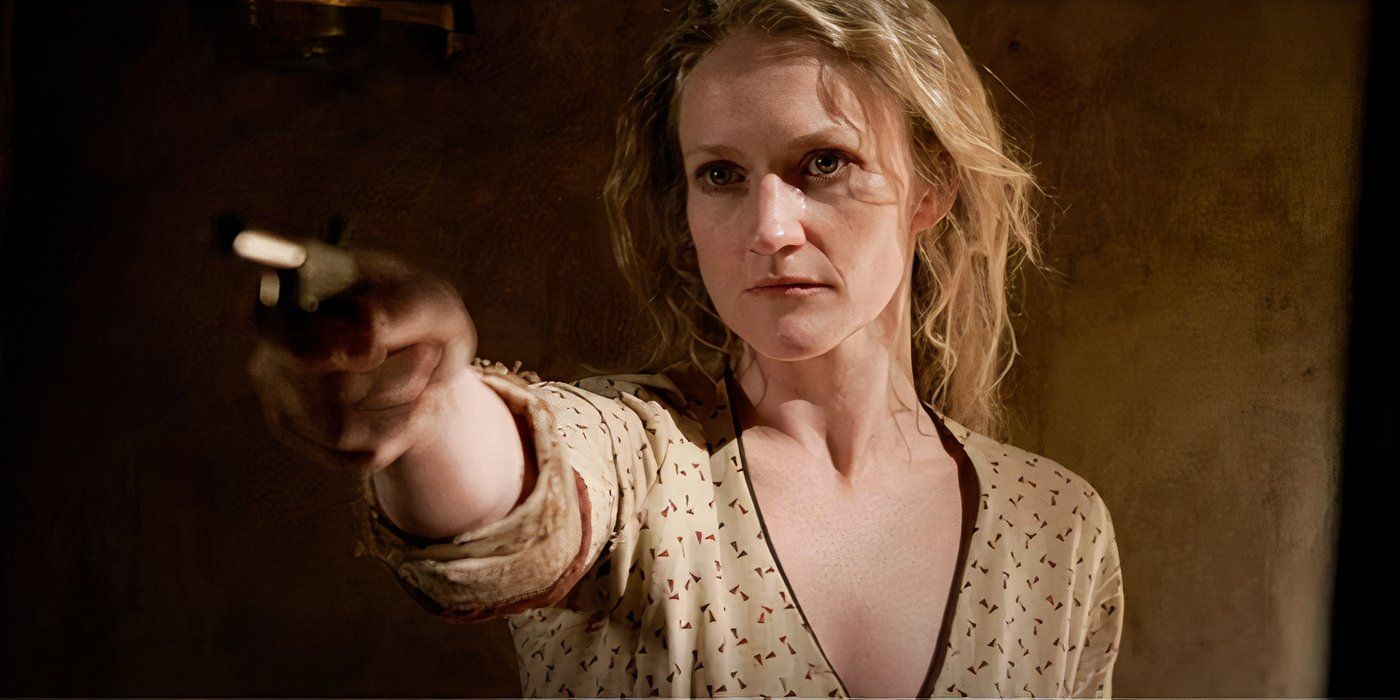
Trixie (Paula Malcomson) is one of the standout characters in Deadwood as one of the sex workers at the Gem Saloon. While it is shown that she is intimidated by Al Swearengen in the early episodes, she is also shown to be a tough and capable woman in her own right who is not afraid to defend herself. This is clearly shown in her introductory scene in which Trixie shoots a customer who was allegedly beating her.
As it turns out, this is likely a story the show took from the real history of Deadwood and may have helped to create the character of Trixie. According to Legends of America, there was a report of a sex worker at the Gem Saloon known only as Tricksie who once shot a customer in the head. As is depicted in the show, the man did not immediately die from the wound.
13 Bullock's Public Hanging
Bullock's Insistence On Seeing Justice Done Was A Real Event
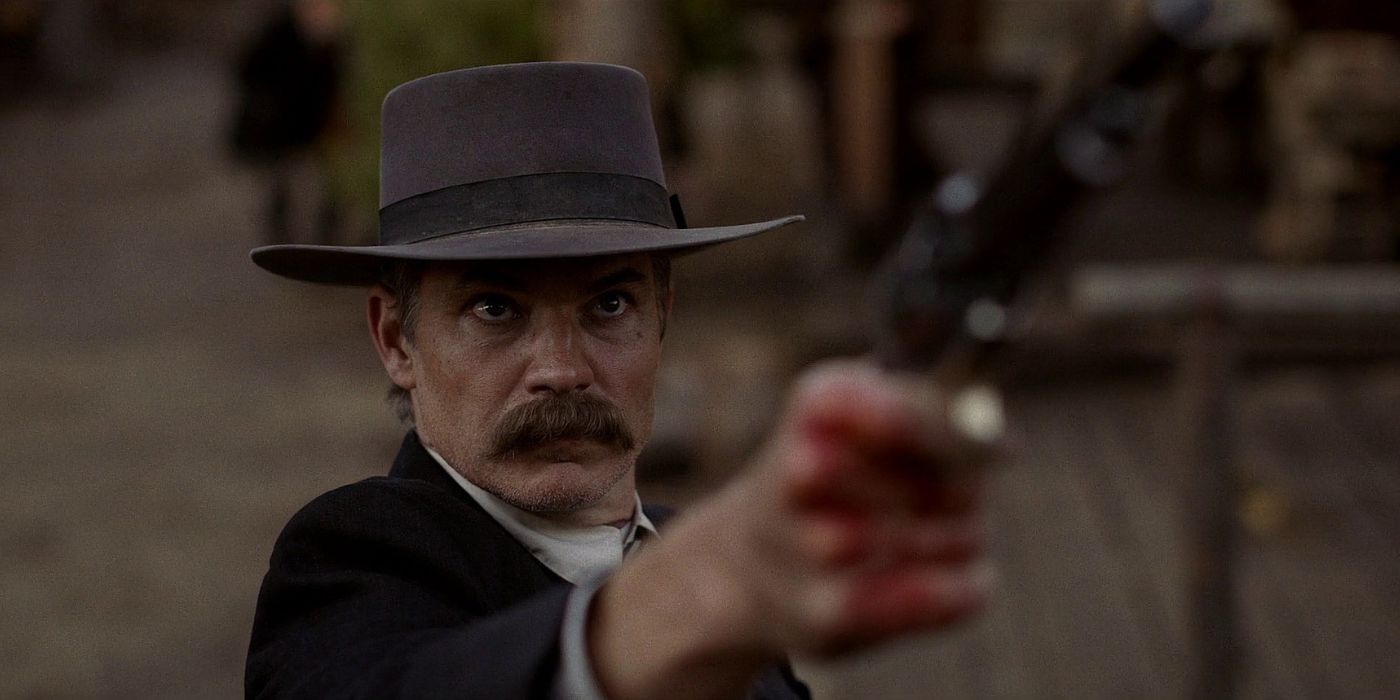
The first scene of Deadwood is a terrific introduction to this harsh Western world while also being a perfect way of establishing Seth Bullock's hardened belief in seeing justice served. As Seth and Sol Starr are preparing to head off and start their new life in Deadwood, they are overseeing a prisoner who is being held until his execution. However, when an angry mob arrives to lynch the man, Bullock will not allow mob justice to take over.
According to the book, Seth Bullock: Black Hills Lawman, this was taken from a real story attributed to Bullock in which he held a mob back at gunpoint and carried out the hanging himself. The moment becomes a defining one for Bullock and is even referenced in the Deadwood movie where Bullock nearly lets the mob kill George Hearst before choosing the protect the man and uphold the law.
12 The Peak Of The Black Hills Gold Rush Was 1876-1877
Gold Discovery In 1874 Spurred Deadwood's Rapid Growth
The narrative of Deadwood centered around Dakota's Black Hills gold rush, and the show portrayed this unique period in US history incredibly well. With Colonel Custer patrolling the Dakota territory looking for the perfect place to build a fort, the Black Hills Expedition of 1874 prompted the curious and intrepid to follow his example. Once gold was discovered in the Black Hills, opportunistic settlers came from all over the nation (and the world) to make their claims and strike it rich.
Deadwood's historically accurate gold rush even stretches to its titular town, as there is a real Deadwood in South Dakota, and just like its namesake in the TV show, it was founded during the Black Hills Gold Rush. The town of Deadwood grew out of this unexpected boom, beginning as a collection of shanties until Al Swearengen established his Gem Theater in 1876, and a merchant class emerged selling tools and mercantile to prospectors hoping to make their fortunes and settle in the town while land was still inexpensive.
11 Wild Bill Hickok Was Shot & Killed By Jack McCall While Playing Poker
Wild Bill Hickok Was Killed In 1876
Keith Carradine played Wild Bill Hickock in Deadwood, and his portrayal was one of the most accurate real-life characters on the show. Wild Bill Hickok, one of the most famous gunslingers in Wild West lore, came to Deadwood in 1876 as part of Charlie Utter's wagon train along with Calamity Jane. At that point in his life, men were anxious to make a reputation for themselves by killing such a well-known folk hero, which is just what Jack McCall did. Many Western TV shows and movies use real gunslingers, outlaws, and cowboys from the era but alter historical details.
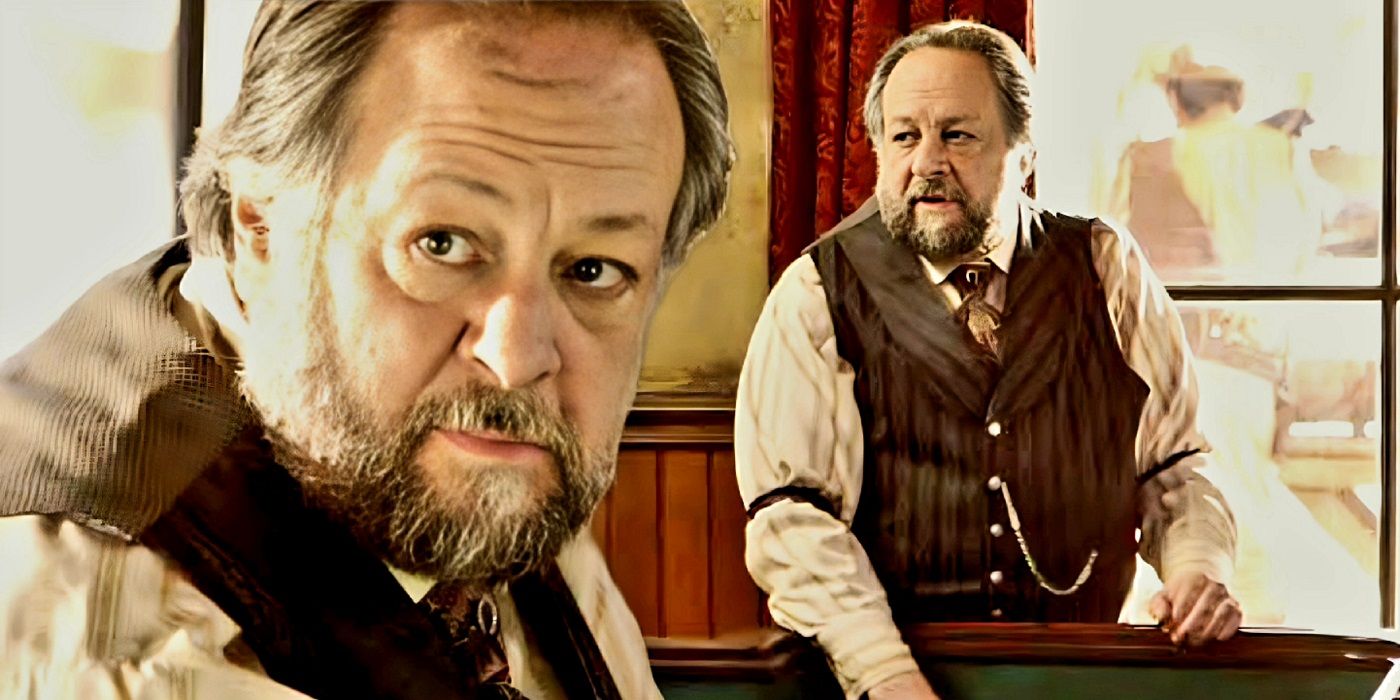
Related
Why Ricky Jay’s Eddie Sawyer Left HBO’s Deadwood In Season 2
Ricky Jay's Eddie Sawyer was a minor character in Deadwood season 1, but his sudden season 2 exit made it hard not to wonder what happened to him.
When it comes to Wild Bill Hickock, however, Deadwood stays true to real life, including at the moment of his death. According to the official Deadwood site devoted to the town and its history, after playing several rounds with Hickok and losing badly the previous day (Hickok even lent him money to cover his breakfast), an insulted McCall found Hickok at his preferred saloon where he was sitting uncharacteristically with his back to the door and shot him in the back of the head.
10 McCall Was Found Not Guilty In His First Trial
McCall's Questionable Defense Was Also Based On Reality
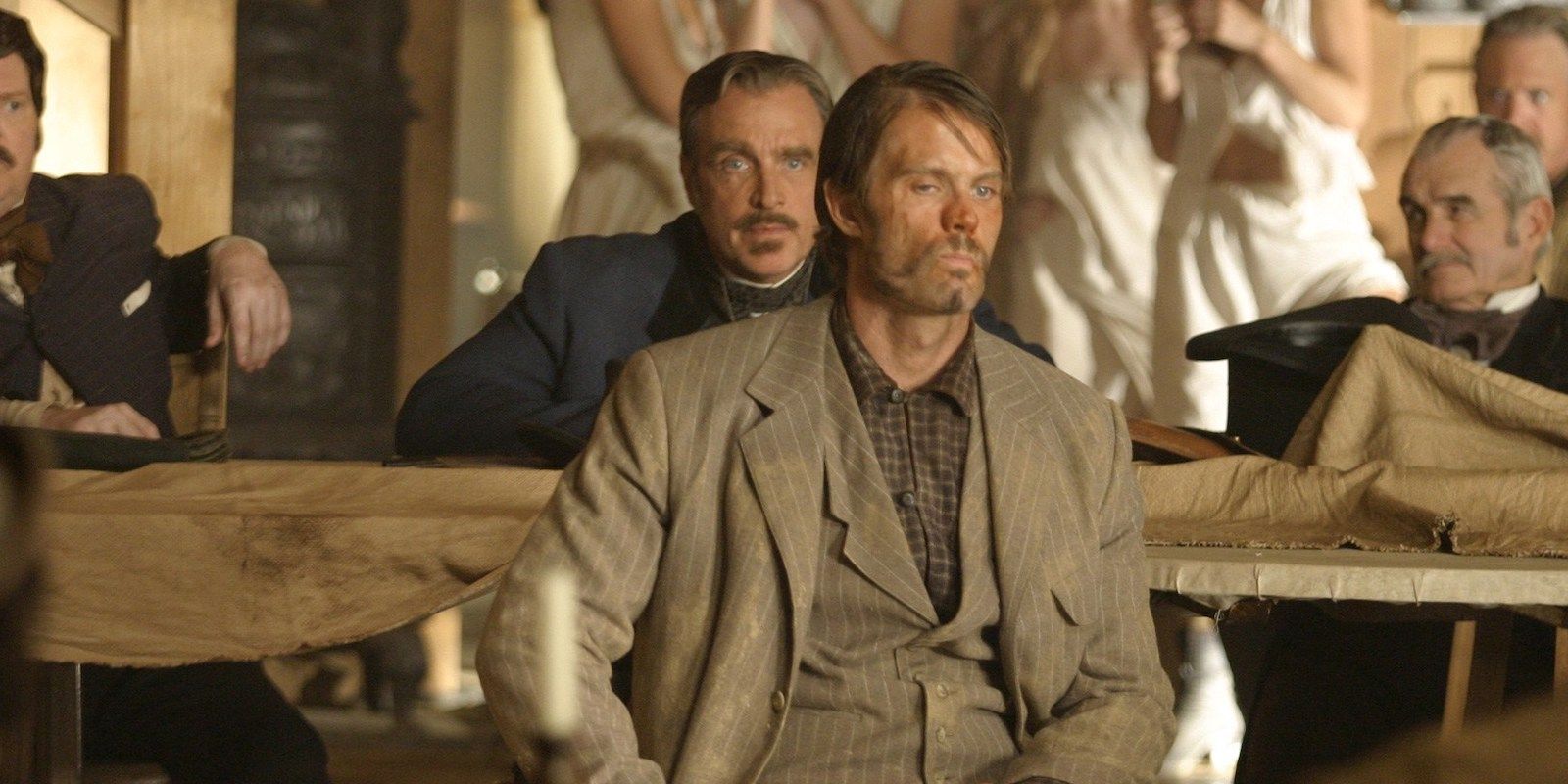
As is depicted in Deadwood, it did not take long for Jack McCall to be taken into custody for the murder of Wild Bill. An impromptu trial was quickly formed. In the series, the trial takes place at the Gem Saloon, whereas in reality, it happened at McDaniel's Theater. Despite there being several witnesses to McCall shooting Wild Bill, McCall claimed that the murder was due to the famed outlaw having killed McCall's brother years earlier.
McCall was found not guilty of the crime and quickly fled Deadwood as is shown in the series. However, the events surrounding McCall's fate after that are dramatized for the series. Bullock hunts McCall down and arrests him again for the crimes that did not happen in reality. McCall was simply arrested again in Wyoming after bragging about the murder and the court decided the "not guilty" verdict in Deadwood didn't apply to the lawful states. He was tried again, found guilty, and hanged.

One of the most interesting aspects of the town of Deadwood depicted in the series is the Chinese community. While Mister Wu (Keone Young) is the main character who represents this community, they are shown to be a thriving part of the town, involved in various business enterprises, including Wu's dealings with Al Swearengen.
In reality, there was a large Chinese community in Deadwood and the town served as one of the few that would welcome Asian immigrants at this time. There was a large anti-Chinese immigration sentiment in the United States during the era, but it was reported that the Chinese immigrants in Deadwood were generally welcomed. They had set up a section of town to maintain their own culture with one another, but they were also known to be involved with the overall community.
8 There Was A Smallpox Outbreak In 1876
Calamity Jane Helped Deadwood
Outlaws and violence weren't the deadliest things facing citizens of small towns like Deadwood during the late 19th century. As Deadwood showed, the disease was perhaps the biggest risk those living in frontier towns faced. Deadwood showed the impact of smallpox incredibly well, but it's more historically accurate than first appeared, as the 1876 epidemic in the town actually happened. What's more, the show's inclusion of Wild West legend Calamity Jane was also true to real life.
When a smallpox outbreak ripped through Deadwood, quarantine tents were set up to care for the sick known as pest houses, and at great risk to herself, Calamity Jane helped care for the ill that were brought to them during the epidemic. The Deadwood site claims that smallpox claimed 300 lives, or what amounted to a third of the town's population in 1876.
While it had a devastating effect on the local economy as shops folded up within days of inhabitants contracting the disease, the town was also able to rebuild and became known for the collective spirit of its citizens who persevered in spite of great losses.
Calamity Jane also played Susan in The Sessions (2012)
7 The Real Metz Family Were Killed In 1876
One Of The Most Horrific Incidents in Deadwood
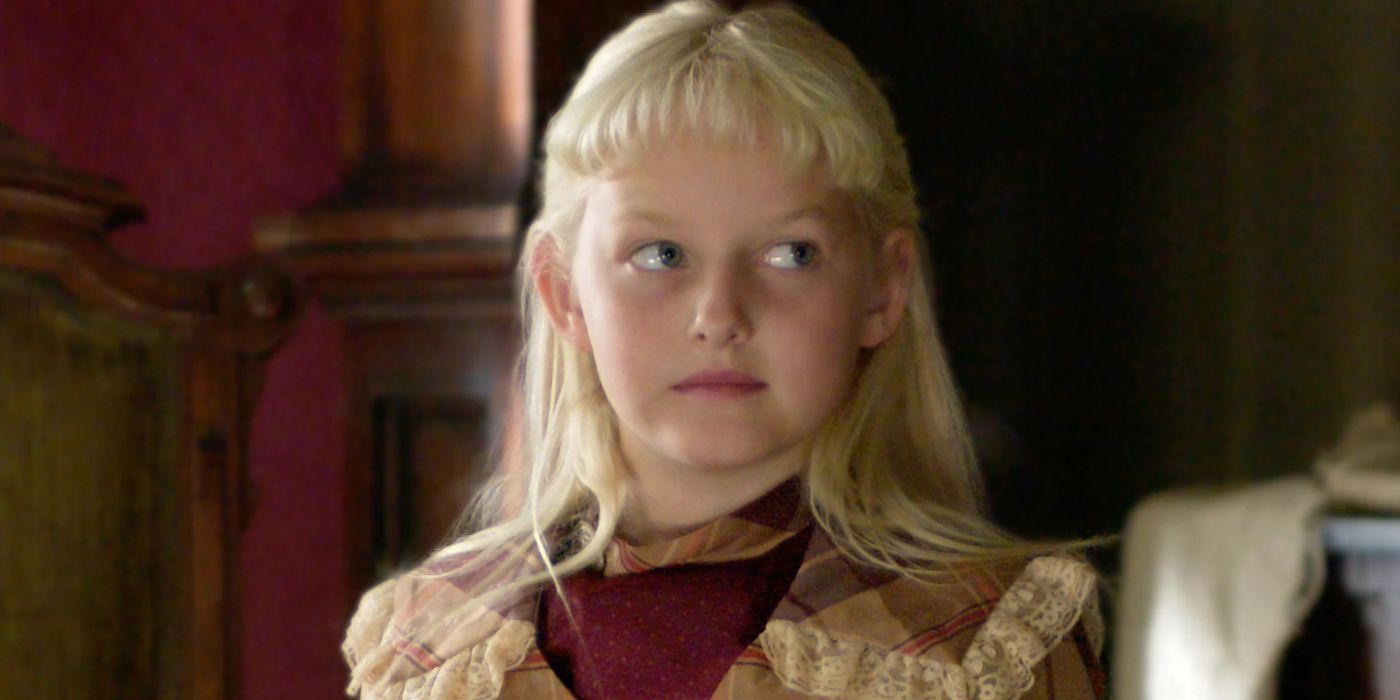
One of the most horrific incidents in Deadwood was, shockingly, historically accurate — the Metz family massacre. The Metz family, a group of Dutch settlers traveling through Deadwood to Minnesota, were real individuals (even if they're not as well known as the likes of Calamity Jane or Wild Bill Hickock). Deadwood changed a lot about Al Swearengen but not his brutality, and when the Metz encampment was attacked by Swearengen's men, they made it resemble the handiwork of the Siouxe.
The real Metz family massacre happened in 1876, and at the time was blamed on the famed Native American warrior Crazy Horse, the Lakota war leader who spearheaded many battles against the encroaching United States. According to the Spearfish Area Historical Society, there were no survivors in the Metz massacre, whereas, in Deadwood, one little girl named Sofia (Bree Seanna Wall) is taken in by The Widow. Sofia is closely watched by Swearengen, who hopes that when she eventually starts to speak, she won't be able to identify any of his men.
6 South Dakota Became A State In 1889
Statehood Transformed Deadwood
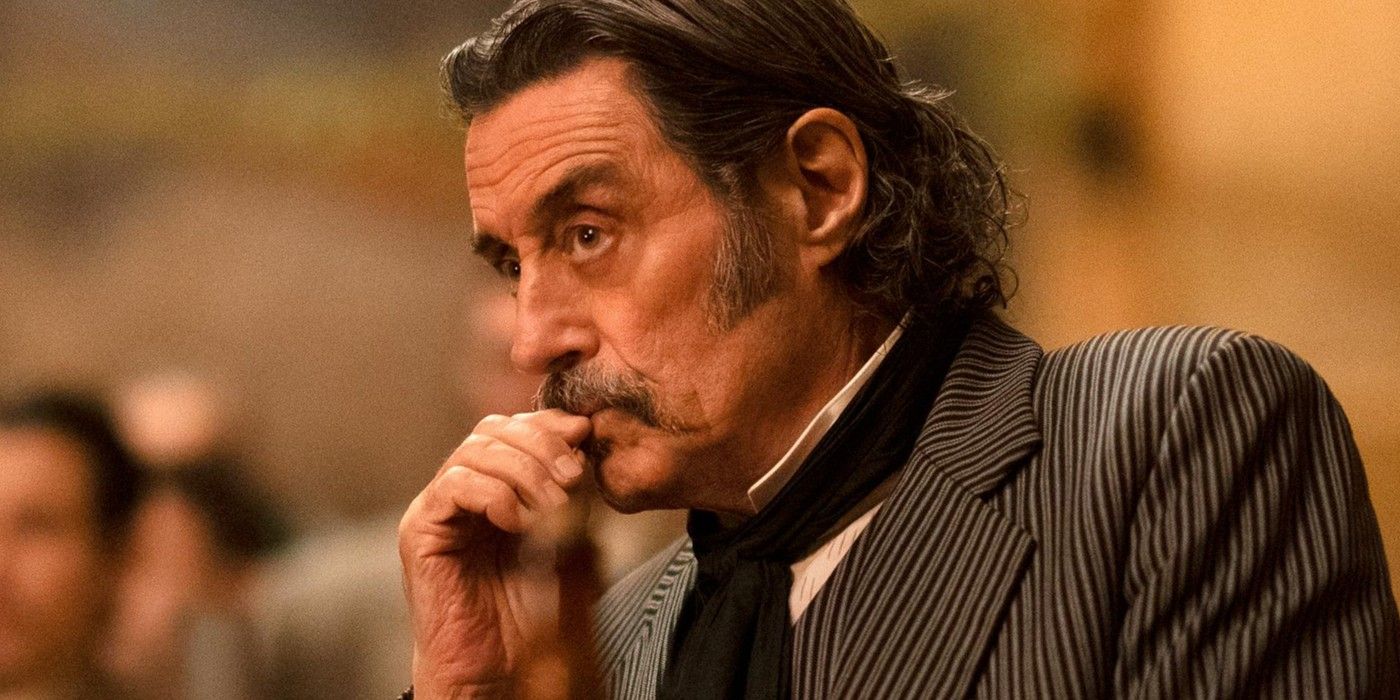
A decade separates the end of the series and the Deadwood movie, and the narrative reflects the passage of time for all the characters. Just as with the main show, the Deadwood movie takes pains to ensure historical accuracy, and one of the key events it displays is South Dakota's ascension to statehood and the impact it has on the titular settlement. The Deadwood movie takes place in 1889 and is historically accurate when it comes to the celebrations, as this was the same year that South Dakota became an official state.
The celebrations are the key reason many characters have come back together. What's more, in the time that the Dakota territory officially became a state, the town of Deadwood grew from a collection of shacks into a real cosmopolitan space with bustling streets and its own train station. After South Dakota became a state and Deadwood benefited from being able to transport resources like lumber and ore by rail, it flourished into a prosperous town that barely resembled what it had been just a decade before.
5 Wyatt Earp & Morgan Earp Visited Deadwood In 1876
Earp Brothers Sought Fortune In Deadwood
There are few historical figures from the Gold Rush era who are quite as legendary as Morgan and Wyatt Earp. Just like several other famous 19th-century personalities, the Earp brothers appear in Deadwood. And, just like figures such as Calamity Jane, Deadwood didn't need to be historically inaccurate to include them, as the real brothers visited the actual South Dakota town in real life. The Earp brothers made their way to Deadwood in 1876 with the twinkle of gold in their eyes.
According to Wyatt Earp - Frontier Marshal by Stuart Lake, Earp's wanderlust got the better of the brothers and they left Dodge City, Kansas for Deadwood in the Fall to make their own fortunes during the peak of the Black Hills Gold Rush. Unfortunately, the gulches were packed with miners, but Earp decided that whatever gold dust they found in the ground could be claimed at the gambling tables, and the brothers also briefly transported lumber with their team of horses over the spring before returning to Dodge City before winter came.
4 Jack Langrishe Established A Theater House In Deadwood In 1876
Jack Langrishe Appeared In The Final Season
Brian Cox joined the show's cast to play noted 19th-century actor Jack Langrishe appears in the final season of Deadwood. Langrishe arrived in Deadwood with a theater troupe of performers hoping to add a little culture to the town. While Langrishe establishing his theater made for an interesting narrative arc, it was also completely historically accurate. According to Legends of America, they began by operating out of the Bella Union Theater and later established their own theater house so that performances didn't compete with the brothel business operating at the same time.
Langrishe and his troupe, along with the work of Martha Bullock, helped to establish art, culture, and a connection to far-away metropolitan areas that Deadwood, in its isolated state, wouldn't ordinarily have had anything to do with. The real Bella Union theater operated from 1876 to 1878, though lack of income saw it transform into a grocery store.
3 Seth Bullock Opened The Bullock Hotel
The Location Still Stands 125 Years Later
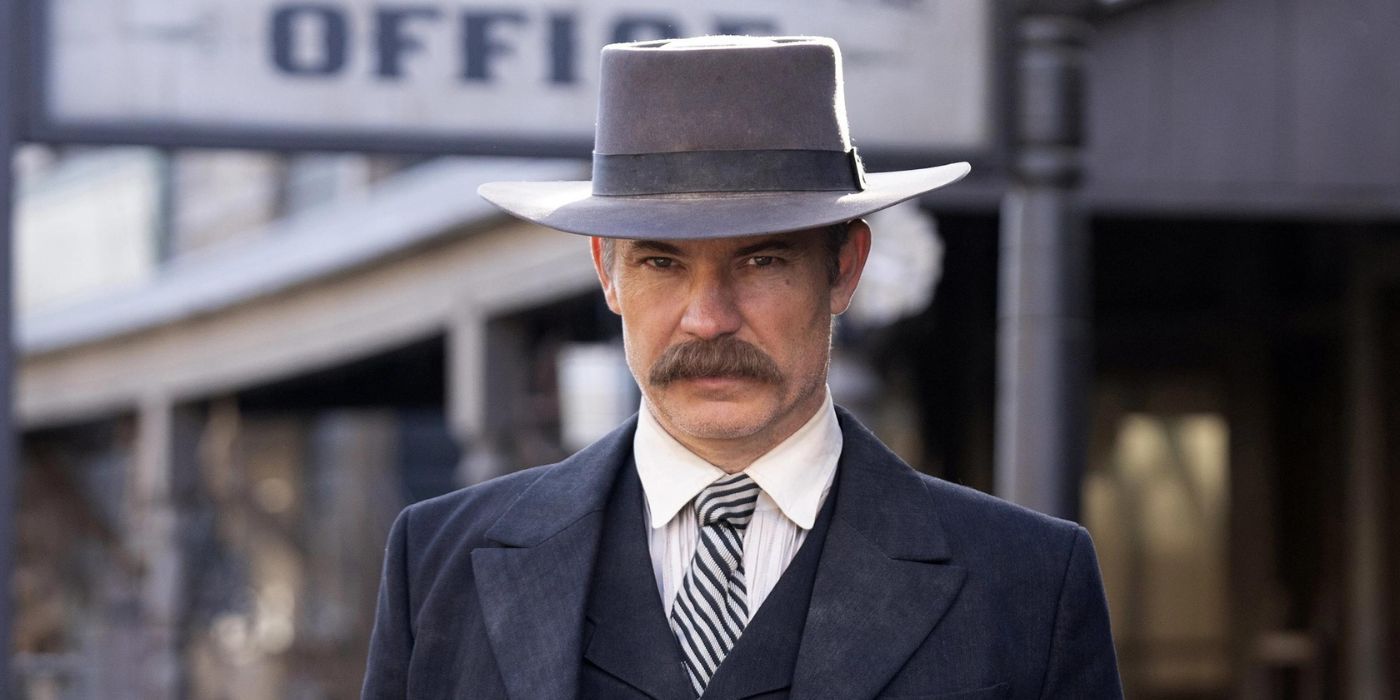
Langrishe's Bella Union Theater isn't the only building in the town of Deadwood that also exists in real life. When Deadwood: The Movie catches up with Seth Bullock again, the former sheriff has become a U.S. Marshal and is still bringing law and order to the now-bustling mining town. He's also moved beyond opening a hardware store with his friend Sol Star and the pair have established the Bullock Hotel.
The Bullock Hotel wasn't a fictional location created for Deadwood. The building and business both exist in real life, and the show doesn't change much about its story. What's more, it's one of the few locations featured in the show that still exists. The Historic Bullock Hotel website boasts that the building still exists over 125 years later and is a major tourist attraction for fans of Deadwood and one of its most famous historical figures.
2 George Hearst And His Mining Operations Arrived In Deadwood In 1877
Hearst Owned Over 600 Acres
George Hearst (played by Gerald McRaney) is one of the lesser-known real historical figures in Deadwood, but the show did a pretty good job at portraying him accurately. Prior to becoming one of the most powerful newspaper publishers in the country, George Hearst came to Deadwood in search of "the color." After purchasing the Homestake Mine, he would eventually start buying up other claims and mining facilities around Deadwood Gulch until he owned over 600 acres and his influence over the town was unavoidable.
However, Deadwood also had an incredibly inaccurate moment with George Hearst. Despite Deadwood: The Movie showing Hearst arrested for the murder of Charlie Utter and a mob led by Calamity Jane beating him within an inch of his life, the real Hearst never answered for his less-than-savory methods of obtaining claims in Deadwood. The real George Hearst later became a Senator, holding a seat in office from 1887 to 1891.
1 Sol Star Became The Mayor Of Deadwood In 1884
Sol Star's Political Career Flourished
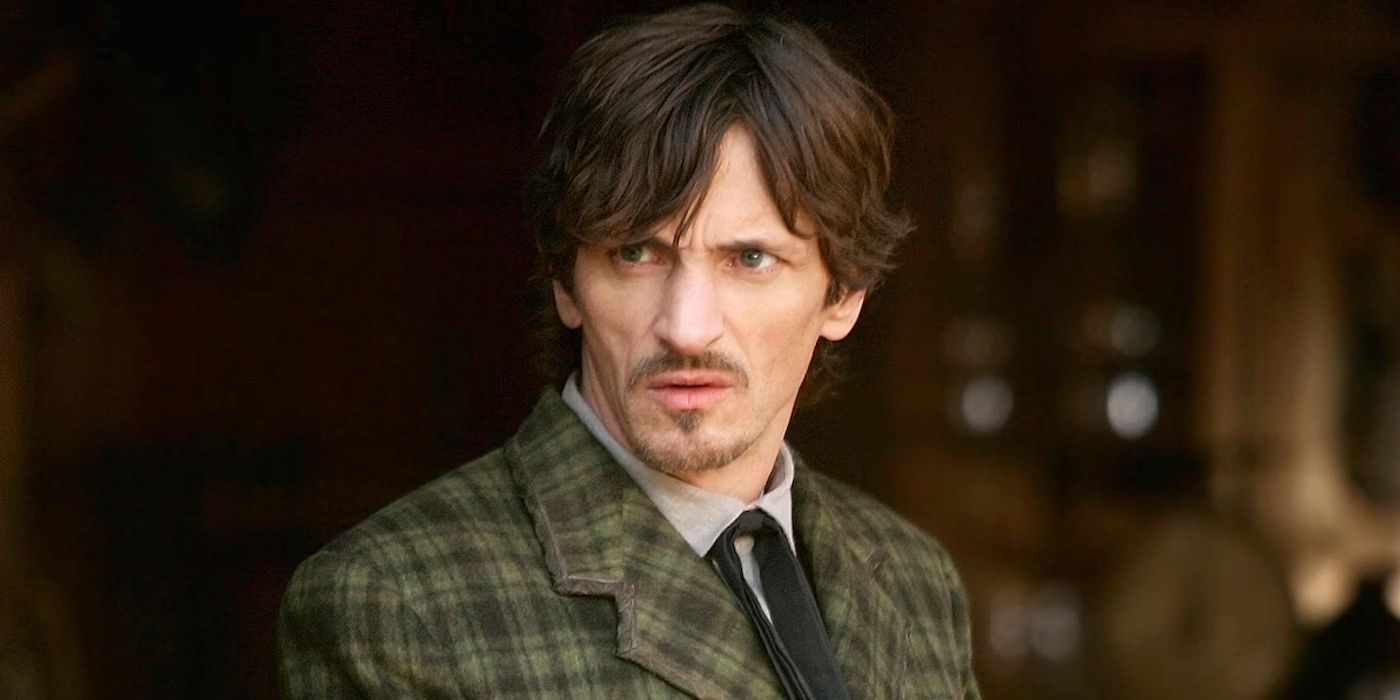
Deadwood's historical accuracy is a key reason that the show was so engaging, as it managed to be riveting from start to finish without having to change the details of many events or add in numerous fictional characters. Alongside Seth Bullock and Al Swearengen, Sol Star (John Hawkes) was a real person and a foundational part of Deadwood's history.
After starting the hardware store with Bullock upon their arrival to Deadwood, Sol went on to support Bullock with the Bullock Hotel while at the same time also pursuing a political career. Following E.P.'s election to mayor, Star became mayor of Deadwood in 1884 and held the position for a number of years, eventually becoming a member of the South Dakota House of Representatives, though Deadwood doesn't show the full extent of his impressive political career.
Source: Spearfish Area Historical Society, Deadwood, Legends of America, The Historic Bullock Hotel
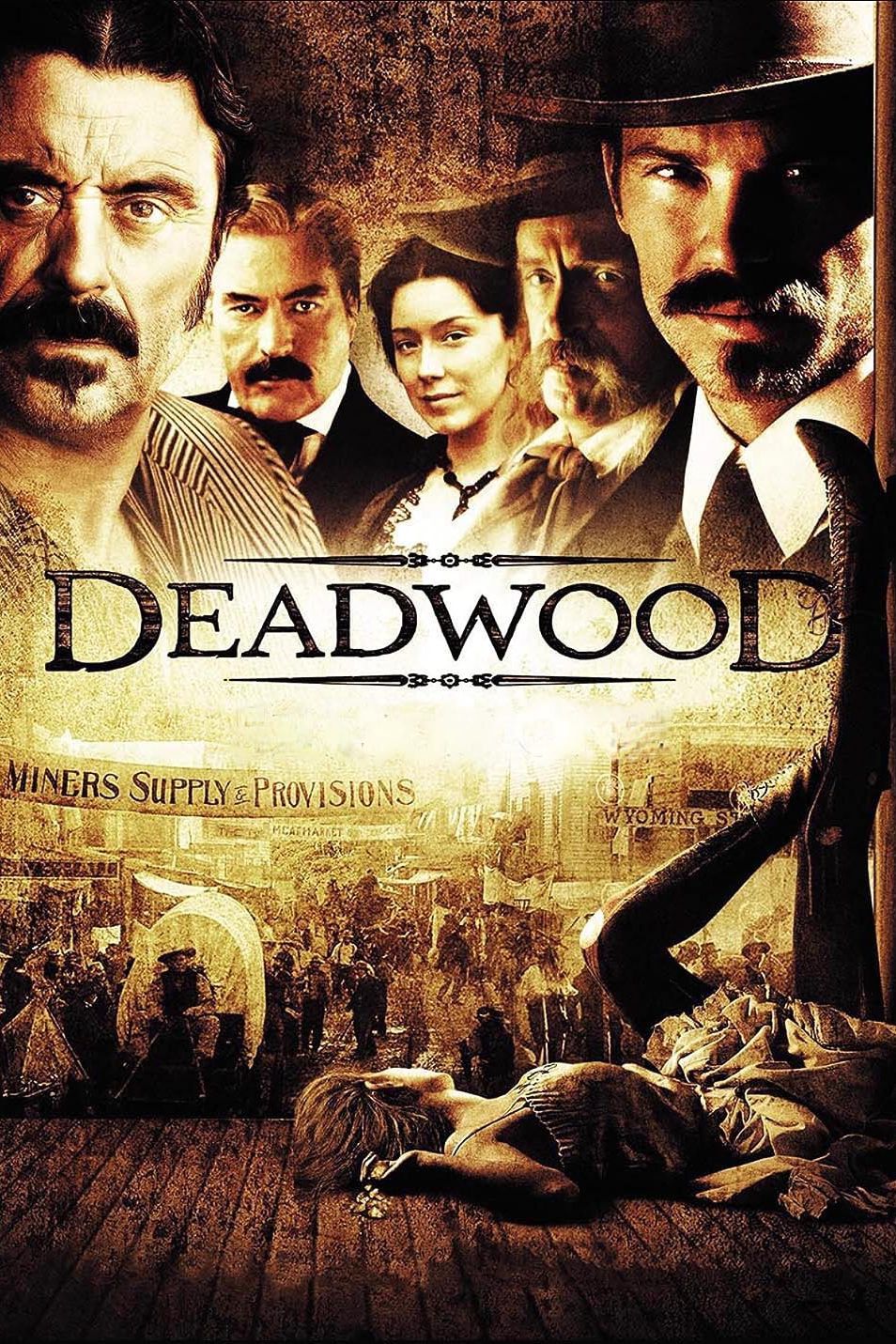
Deadwood is a western drama series created for HBO by David Milch. The series takes place in Deadwood, South Dakota, where corruption runs rampant in the gold-mining era as the settlement existed outside the U.S. territory expansion following the Civil War. As the town was the site of a major gold find, it continues to attract people from all walks of life - especially opportunistic criminals.
Release Date March 21, 2004
Seasons 3
Showrunner David Milch


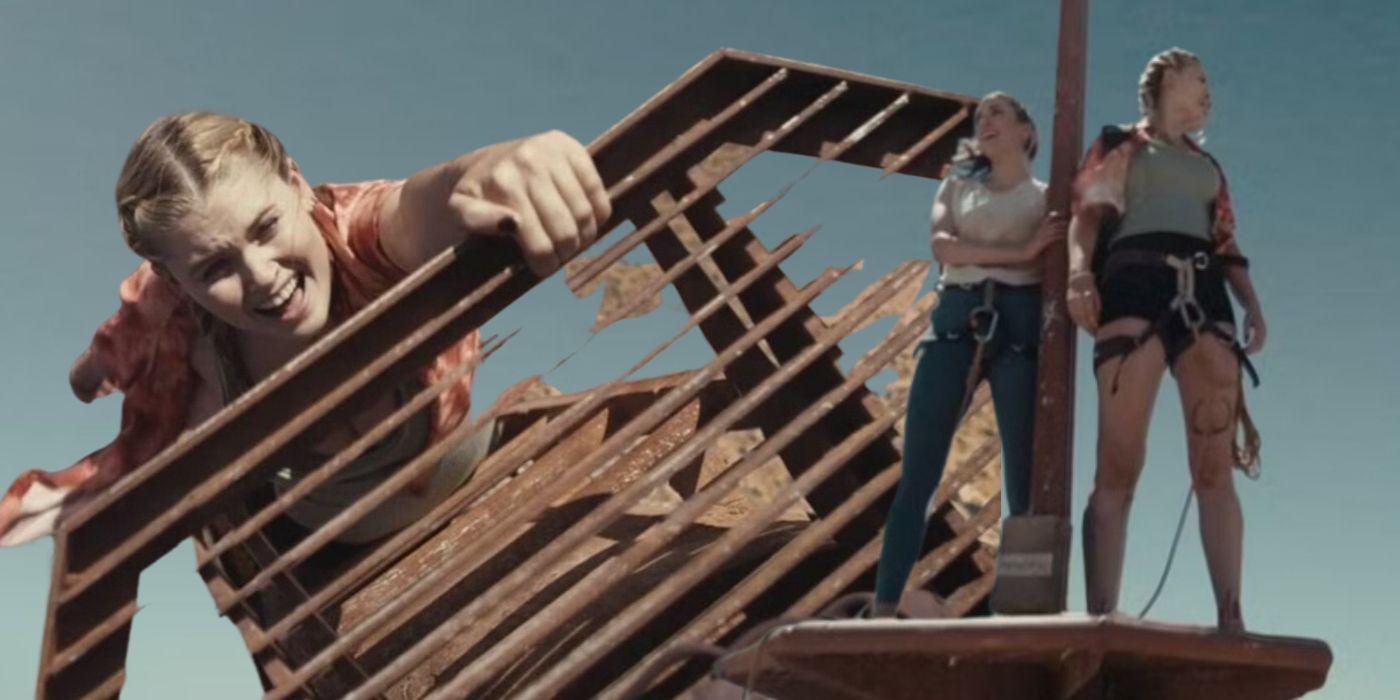
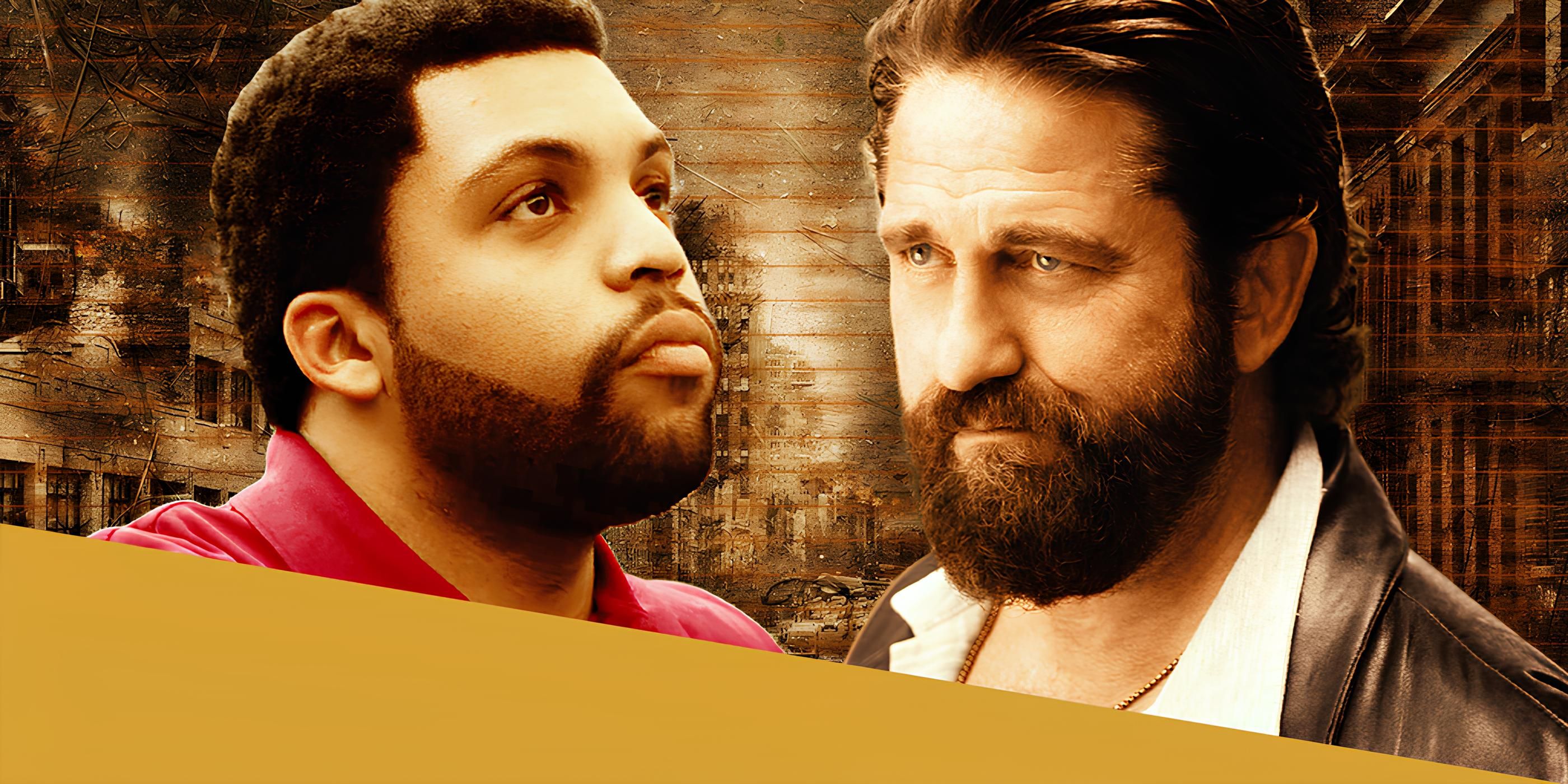





 English (US) ·
English (US) ·